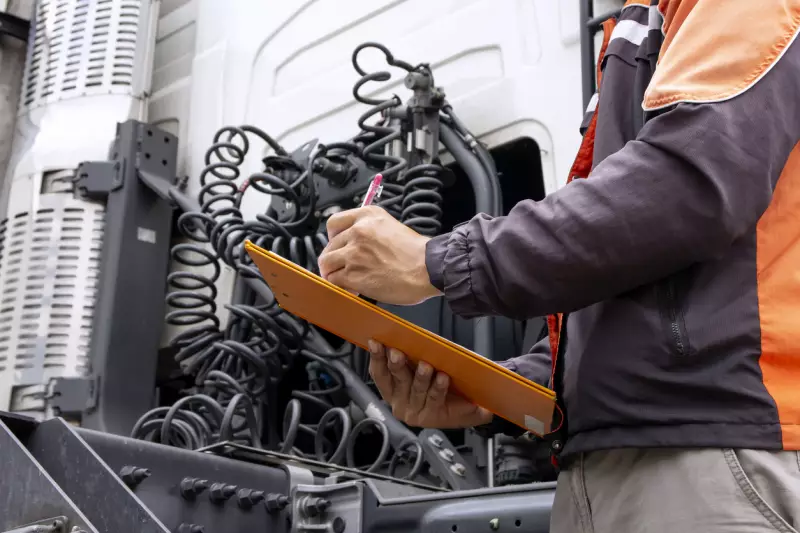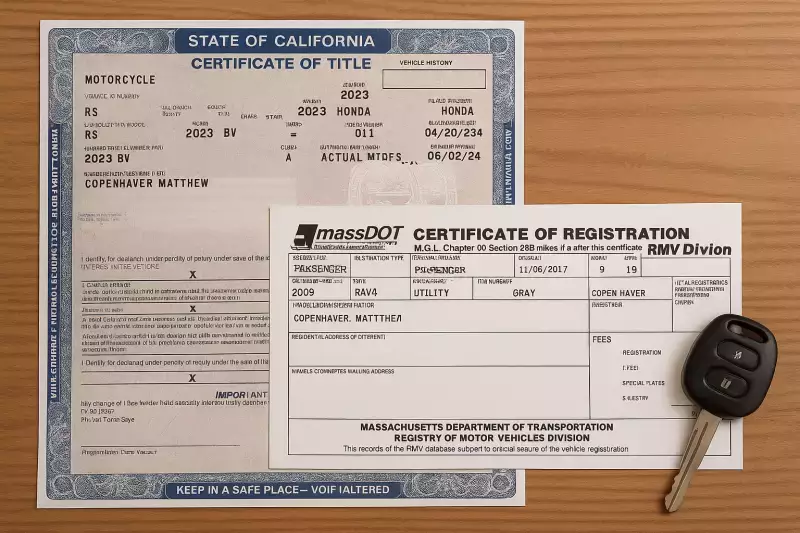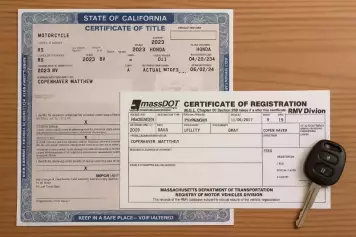While almost every truck you would see on the road runs on a diesel engine, not all trucks are powered by diesel engines. Typically, most light-duty vehicles and smaller trucks often run on gasoline. The most common example is a pickup truck.
In contrast, heavy-duty trucks and vehicles generally use diesel engines because they are fuel-efficient yet powerful and have a higher torque. Common examples of trucks powered by diesel engines are tractors, trains, buses, submarines, and other heavy-load vehicles, as well as large trucks. If you want to properly maintain a diesel truck or commercial vehicle, you first need to understand how a diesel engine works.
How Does a Diesel Engine Work?
Like a typical gasoline engine, a diesel engine works by converting fuel into mechanical energy through a sequence of internal combustion. However, the combustion process in both engines differs. In gasoline engines, air, and fuel mix and are then compressed by pistons once injected into small metal cylinders. Afterward, the mixture is ignited by sparks coming from the pugs.
On the other hand, air is first let into the cylinder and compressed before it mixes with the fuel in a diesel engine. Typically, the air is heated up when it is compressed, making the fuel ignite. The combustion process in a diesel engine is a repeated cycle of the following stages, during which the piston moves upward and downward twice:
- Air is allowed into the cylinder through the open-air inlet valve while the piston moves downward.
- The inlet valve closes, and the piston moves upwards. Due to the upward movement, the piston compresses the air mixture, causing it to heat up. Afterward, fuel is injected into the heated air through the fuel injection valve at the center and spontaneously ignites.
- The piston is pushed down as the fuel-air mixture ignites. This drives the crankshaft, which typically sends power to the wheels.
- The returning piston pushes out exhaust gases once the outlet valve opens wide.
Diesel engines have good fuel economy because, unlike gasoline, diesel is thick and burns markedly slower. In addition, they do not require electrical systems or spark plugs to power them. As a result, they rarely malfunction and can operate over 55,000 miles without requiring any major repairs.
Furthermore, unlike gasoline engines, diesel engines operate at lower RPMs. Consequently, while running, they can attain the same level of power even with lower revolutions per minute, resulting in less wear on vital components of the engines and making them last longer.
Diesel Engine Maintenance Checklist

To avoid potential issues with a diesel engine and maximize efficiency while also extending the engine’s lifespan, it is important to observe regular maintenance checklists by conducting the following routine checks:
Regular Oil and Filter Changes
Diesel engines typically operate at higher temperatures and, as a result, require clean oil to draw away the heat and operate efficiently. Engine oil lubricates vital components of a diesel engine and removes harmful contaminants.
When considering an oil change, use the right diesel-grade and manufacturer-recommended oil and oil filter. This will help keep the engine components optimally lubricated and reduce friction or wear between components. It is best to change a diesel engine’s oil and oil filter at intervals as specified by manufacturer’s guidelines, typically between 10,000 and 15,000 miles for most diesel trucks.
Regular Air Filter Maintenance
Air filters can get dirty and clogged, hence reducing fuel efficiency and power in diesel engines. Regular inspection and cleaning of the air filter will help ensure a clean air supply by keeping harmful contaminants out of the engine. When excessively dirty or torn, an air filter should be replaced in a manner recommended and specified by the truck manufacturer.
Draining the Water Separators
Unlike gasoline, diesel fuels get easily contaminated with water, which is why diesel engines typically have water separators around the fuel filter. While they are self-cleaning, it is important to regularly inspect the system and drain the water manually for most diesel trucks to prevent oil contamination.
Regular Fuel Filter Change
Dirty fuel generally causes injector problems. If left unchanged for a long period, a dirty or worn-out fuel filter will fail in its role of ensuring clean fuel enters the engine, which can lead to decreased engine performance in fuel trucks. Hence, it is important to regularly inspect the fuel filter for dirt and replace it where it appears overly clogged. It is often advised to replace a diesel truck’s air filter every 10,000 to 15,000 miles or as specified by the manufacturer.
Frequent Inspection of the Coolant System
An effective cooling system in a diesel engine will prevent overheating. Hence, it is important to always ensure a diesel truck’s cooling system is in order to ensure optimal performance. To achieve this, always check coolant levels at intervals. In addition, regular flushing and replacing coolant in a manner recommended by the manufacturer cannot be overemphasized, as this helps to prevent overheating and corrosion.
Diesel Maintenance vs. Gasoline Maintenance
The approach to diesel engine maintenance is often different from that of a gasoline engine, largely due to how each generates its power and performs under load. Generally, gasoline engines perform better for shorter trips and lighter weights and are relatively cheaper to maintain depending on the conditions under which they are being used.
While diesel truck maintenance is more demanding, can be potentially complex, and typically more expensive, they often have longer service intervals. This is because diesel engines are more robust and are designed to last longer. Diesel trucks can be more reliable and will run optimally by observing proper maintenance routines and addressing issues before they escalate.








![Best Sites to Check a Car’s History [2025 Review]](https://media.infopay.net/thumbnails/K8lMeG2QLjE46LPqZlmoi6SunKKdT5qvlaRZk6e1.webp)










![Best Sites to Check a Car’s History [2025 Review]](https://media.infopay.net/thumbnails/K8lMeG2QLjE46LPqZlmoi6SunKKdT5qvlaRZk6e1-w356.webp)
